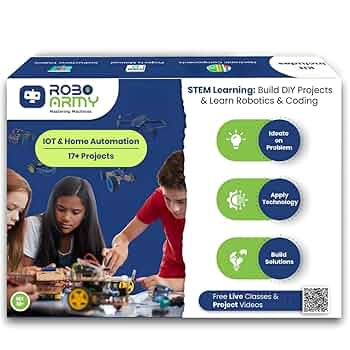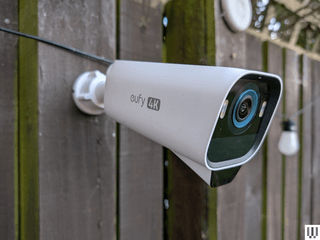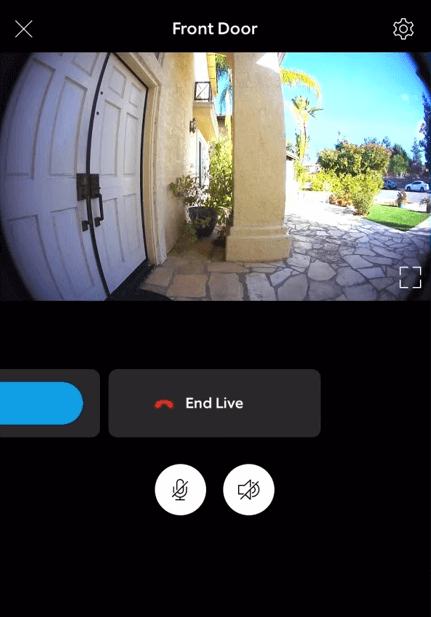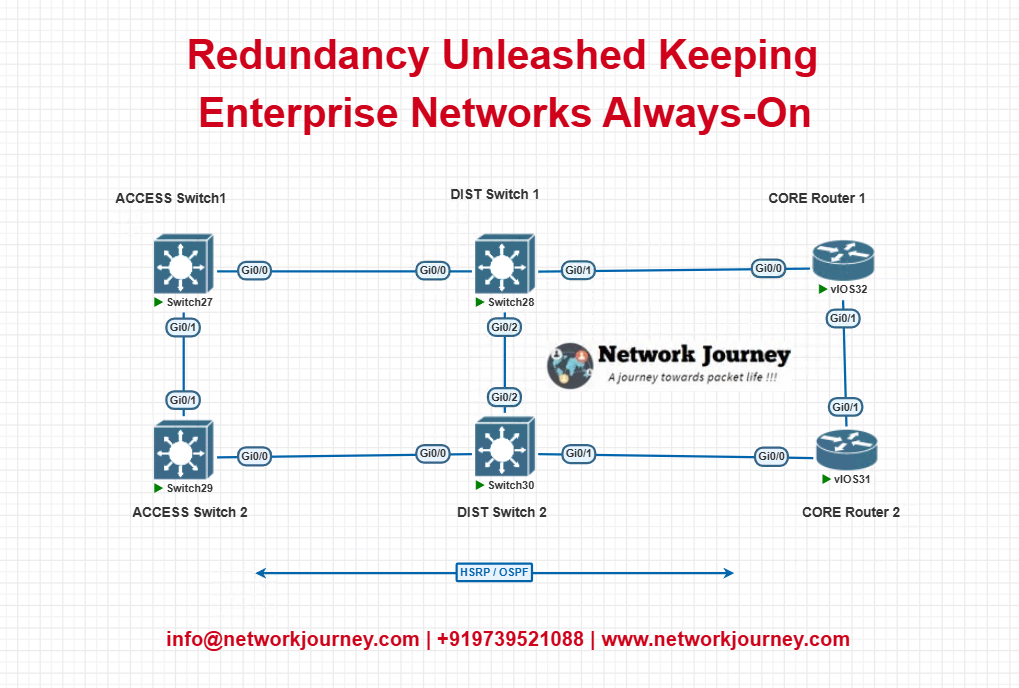Are you ready to transform your home into a smart, efficient space without spending a fortune? Buying IoT devices for your DIY home projects is the easiest way to add convenience, security, and comfort.
Imagine controlling your lights, thermostat, and security cameras right from your phone—sounds great, right? You’ll discover the best IoT devices that fit your budget and skill level, plus simple tips to get started quickly. Keep reading, and you’ll be amazed at how easy it is to make your home smarter on your own.

Credit: openelab.io
Choosing The Right Iot Devices
Buying IoT devices for your DIY home can be fun and useful. You need to pick devices that fit your needs and skills.
Choosing the right devices helps you create a smart home that works smoothly and saves time.
Essential Devices For Beginners
Start with simple devices that are easy to install and use. These help you learn about IoT without too much trouble.
Basic devices often include smart bulbs, plugs, and sensors that connect to your phone or voice assistant.
- Smart light bulbs for easy control of lighting
- Smart plugs to turn devices on and off remotely
- Motion sensors for basic home security
- Temperature sensors to monitor room climate
Advanced Gadgets For Enthusiasts
Enthusiasts can try devices with more features and customization. These require more setup and knowledge.
Advanced gadgets include smart cameras, automated locks, and smart thermostats for better control.
- Smart security cameras with motion alerts
- Smart door locks with remote access
- Smart thermostats that learn your schedule
- Voice-controlled hubs to manage many devices
Compatibility And Ecosystem
Check if devices work well together before buying. Compatibility makes your smart home easier to control.
Many devices connect through systems like Alexa, Google Home, or Apple HomeKit. Pick one ecosystem to avoid problems.
- Choose devices that support the same voice assistant
- Look for apps that can control multiple devices
- Check if devices use common protocols like Wi-Fi or Zigbee
- Consider future device additions and upgrades

Credit: openelab.io
Setting Up Your Smart Home
Buying IoT devices lets you build a smart home easily. These devices help automate daily tasks.
Setting up a smart home needs a good plan. Follow simple steps to connect and secure your devices.
Network Requirements
Your smart home devices need a strong network. Wi-Fi is the most common way to connect them.
Check your router supports enough devices. A faster internet speed helps devices work well.
- Use a 2.4 GHz Wi-Fi band for better range
- Place your router in a central home spot
- Update your router’s firmware regularly
- Consider a mesh Wi-Fi system for large homes
Device Installation Tips
Read the instructions before installing your IoT devices. Follow safety guidelines to avoid problems.
Place devices where they can work best. Avoid spots with weak Wi-Fi or too much interference.
- Keep smart sensors away from metal objects
- Install cameras in visible, secure places
- Use mounting tools that come with devices
- Test devices after installation to confirm connection
Ensuring Security And Privacy
Protect your smart home from hackers by using strong passwords. Change default passwords immediately.
Keep your devices’ software up to date. Turn off features you do not use to reduce risks.
- Enable two-factor authentication if available
- Use a separate network for IoT devices
- Regularly check device access and permissions
- Review privacy settings in device apps
Popular Iot Categories
IoT devices for DIY home projects come in many types. They help make daily life easier and smarter.
These devices connect to the internet and let you control your home remotely or automate tasks.
Smart Lighting Solutions
Smart lighting allows you to control lights using a phone or voice commands. You can change colors and brightness easily.
These lights save energy and add comfort by turning on only when needed or following schedules.
- Wi-Fi or Bluetooth connected bulbs
- Motion sensor lights
- Color-changing LED strips
Home Automation And Control
Home automation lets you control devices like thermostats, fans, and appliances from one place.
You can set rules so devices work automatically, such as turning on the heater when it gets cold.
- Smart plugs and switches
- Voice assistant hubs
- Automated blinds and curtains
Security And Surveillance Devices
Security devices keep your home safe by alerting you to unusual activity. They can record video or sound alarms.
Many devices send notifications to your phone if they detect motion or noise.
- Smart cameras with night vision
- Door and window sensors
- Video doorbells
Energy Management Tools
Energy tools help monitor and reduce electricity use at home. They show where you use the most power.
These tools can control appliances to save energy and lower bills.
- Smart meters
- Energy monitoring plugs
- Automated thermostats
Budgeting For Diy Smart Home
Building a smart home by yourself can save money. Planning your budget helps you buy the right devices.
It is important to balance cost and features. This makes sure you get value for your spending.
Cost Vs. Features
Cheaper devices may have fewer functions. More expensive ones offer advanced options and better quality.
Decide which features you need most. Avoid paying for extras you will not use.
- Basic smart bulbs control light and color
- Advanced sensors detect motion and temperature
- Smart hubs connect many devices together
Affordable Device Recommendations
Start with low-cost devices to test your smart home ideas. They are easy to install and use.
Some popular affordable devices include smart plugs, simple light bulbs, and basic sensors.
- Smart plugs to control appliances remotely
- Wi-Fi light bulbs with color and dim options
- Basic door and window sensors for security
Long-term Savings With Iot
Smart devices can lower your energy bills by managing usage. They help you save money over time.
Automating lights and heating reduces waste. This makes your home more efficient and cheaper to run.
- Turn off lights automatically when rooms are empty
- Set thermostats to save energy when away
- Monitor water use with smart sensors
Troubleshooting Common Issues
Buying IoT devices for a DIY home setup is exciting. Sometimes, these devices face common problems.
This guide helps you fix issues quickly. It covers connectivity, device errors, and software updates.
Connectivity Problems
Many IoT devices need a strong internet connection. Weak signals or wrong settings cause connection loss.
Check your Wi-Fi signal strength and router placement. Restart your router and device if needed.
- Move devices closer to the router
- Check if Wi-Fi password is correct
- Restart your router regularly
- Update device network settings
Device Malfunctions
Sometimes devices stop working or act strangely. Power issues and hardware faults are common causes.
Try turning the device off and on. Check power cables and batteries for damage or low charge.
- Reset the device to factory settings
- Ensure power supply is stable
- Inspect for physical damage
- Consult the device manual for error codes
Software Updates And Maintenance
IoT devices need regular software updates. Updates fix bugs and improve security.
Check for updates in the device app or website. Install updates promptly and restart the device.
- Enable automatic updates if possible
- Back up device settings before updates
- Keep your device app updated
- Regularly clear app cache and data

Credit: openelab.io
Future Trends In Smart Living
Smart living is changing how we use technology at home. IoT devices help make daily tasks easier and homes safer.
As new ideas appear, DIY enthusiasts can add more smart devices to create a connected home.
Emerging Technologies
New IoT devices use better sensors and wireless connections. These help devices talk faster and work smarter.
Smart homes will have more tools for health, security, and energy management. This makes life safer and more comfortable.
- Improved wireless networks like 5G and Wi-Fi 6
- Advanced sensors for motion, temperature, and air quality
- Devices with longer battery life and smaller sizes
Integration With Ai
Artificial intelligence helps smart devices learn your habits. They can adjust settings without needing your input.
AI can improve home security by recognizing faces and detecting unusual activities. It also helps save energy by managing devices well.
- Voice assistants that understand natural speech
- Smart cameras that detect people and pets
- Energy systems that optimize power use
Sustainability And Iot
IoT devices can help reduce energy waste. They track how much power is used and turn off devices when not needed.
Many smart devices are designed to last longer and use less material. This helps protect the environment.
- Smart thermostats that lower heating and cooling costs
- Energy monitors that show real-time usage
- Eco-friendly materials in device construction
Frequently Asked Questions
What Are The Best Iot Devices For Diy Home Projects?
The best IoT devices for DIY homes include smart bulbs, sensors, plugs, and cameras. These devices are easy to install and integrate. They offer automation, security, and energy efficiency, making your home smarter and more convenient.
How Do Iot Devices Improve Diy Home Automation?
IoT devices enable remote control and automation of home functions. They connect via Wi-Fi or Bluetooth to apps. This allows scheduling, monitoring, and managing devices easily, enhancing comfort, security, and energy savings in DIY home setups.
Are Diy Iot Devices Cost-effective For Smart Homes?
Yes, DIY IoT devices are generally affordable and reduce installation costs. They allow customization without professional help. This makes smart home upgrades budget-friendly while providing smart features and energy efficiency tailored to your needs.
What Security Risks Exist With Diy Iot Devices?
DIY IoT devices may have vulnerabilities if not updated regularly. Weak passwords and unsecured networks increase hacking risks. Always use strong passwords, update firmware, and secure your Wi-Fi to protect your DIY smart home from threats.
Conclusion
Choosing IoT devices can enhance your DIY home projects. They offer convenience and efficiency. Smart homes improve daily living with simple tech solutions. These devices make managing your home easier and smarter. From smart lights to security cameras, there’s something for everyone.
You can start small and expand as needed. Investing in IoT creates a more connected home. Explore options, compare features, and find what fits best. Enjoy the benefits of a tech-savvy home environment. Simplify tasks and embrace technology today. Your home deserves it.
Happy DIY-ing!
16 min read







